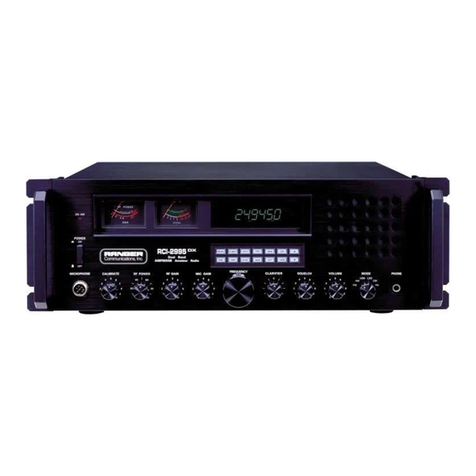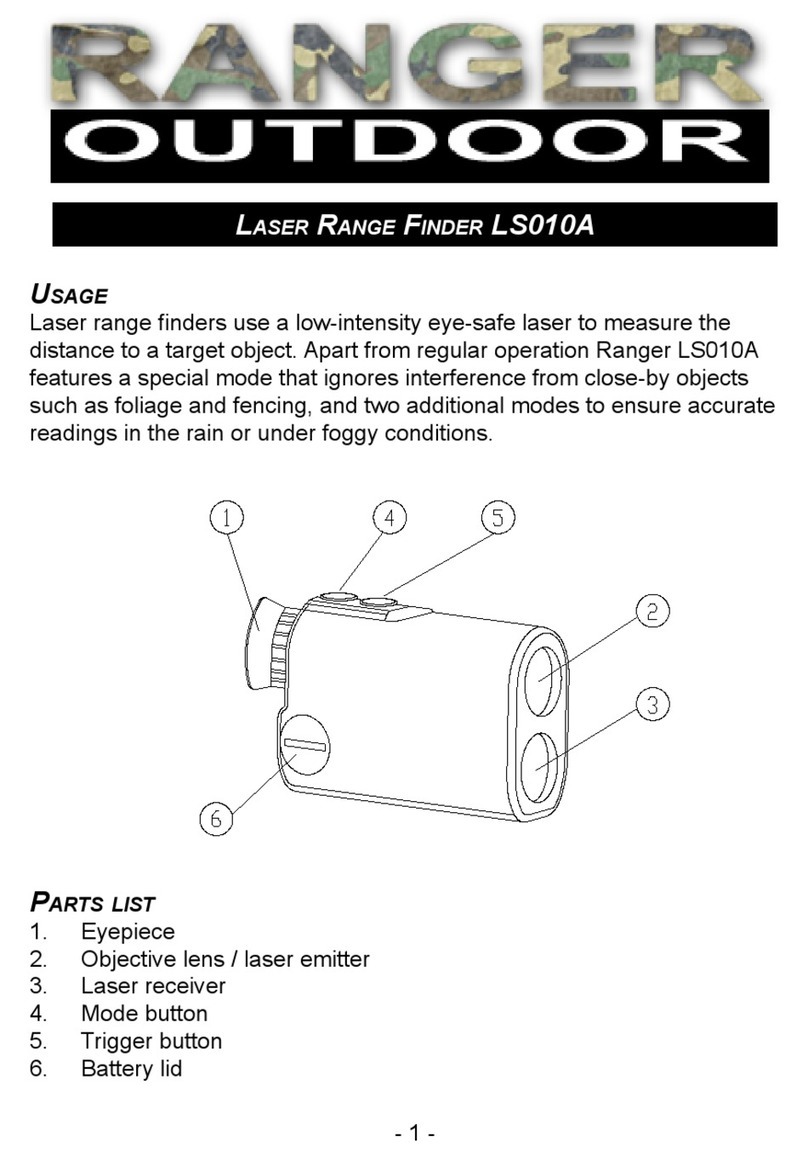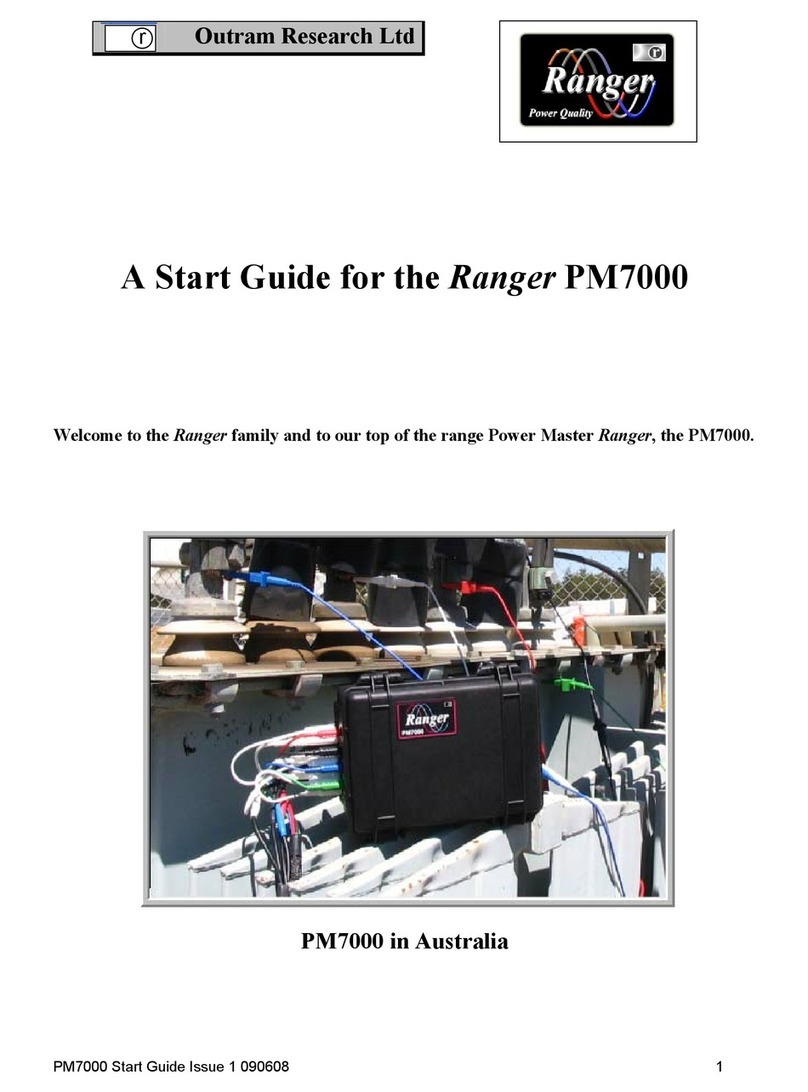
RANGER - 2150 Digital Indicator Reference Manual Rev 1.1
Page 3
6. SETUP .......................................................................................................................................... 24
6.1. Accessing Digital Setup ..................................................................................................... 24
6.2. Exiting Digital Setup...........................................................................................................24
6.3. 2150 Setup Display............................................................................................................ 25
6.4. Setup: Groups and Items ................................................................................................... 25
6.4.1. GRP (Groups) .................................................................................................... 25
6.4.2. ITM (Items) ......................................................................................................... 25
6.4.3. Using the Editing Key Functions ........................................................................ 26
6.5. BUILD (Scale Build)........................................................................................................... 26
6.5.1. DP (Decimal Point Position) ⊗........................................................................... 26
6.5.2. CAP (Maximum Capacity) ⊗.............................................................................. 26
6.5.3. RES (Count-by Resolution) ⊗............................................................................ 26
6.5.4. UNITS (Weighed Units) ⊗.................................................................................. 27
6.5.5. HI.RES (High Resolution x10 mode) ⊗.............................................................. 27
6.6. OPTION (Scale Options) ................................................................................................... 27
6.6.1. USE (Scale Use) ⊗............................................................................................ 27
6.6.2. FILTER (Reading Average)................................................................................ 27
6.6.3. MOTION (Motion Detection) ⊗........................................................................... 27
6.6.4. AUTO.Z (Auto-Zero on Startup) ......................................................................... 28
6.6.5. Z.TRAC (Zero Tracking Sensitivity) ⊗................................................................ 28
6.6.6. Z.RANGE (Allowable Zero Operating Range) ⊗................................................ 28
6.6.7. Z.BAND (Zero Dead Band) ⊗............................................................................ 28
6.6.8. AUTO.T (Auto Tare) ........................................................................................... 28
6.6.9. I.LOCK (Gross Weight Change)........................................................................ 28
6.6.10. MIN.BAG (Minimum Allowable Bag Weight)...................................................... 28
6.7. CAL (Scale Calibration) ..................................................................................................... 29
6.7.1. ZERO (Zero Calibration) ⊗................................................................................ 29
6.7.2. SPAN (Span Calibration) ⊗................................................................................ 29
6.7.3. ED.LIN (Edit Linearisation Points) ⊗.................................................................. 29
6.7.4. CLR.LIN (Clear Linearisation Points) ⊗............................................................. 29
6.7.5. FAC.CAL (Restore Default Factory Calibration) ⊗............................................ 29
6.8. SPEC (Special Settings Menu).......................................................................................... 29
6.8.1. FULL.PC (Security Passcode for Digital Setup) ................................................ 29
6.8.2. KEY.LOC (Front Panel Key Locking) ⊗............................................................. 30
6.8.3. KEY.FN (Key Functions) .................................................................................... 30
6.8.4. B.LIGHT (Backlight Operation) .......................................................................... 30
6.8.5. BRIGHT (Backlight Brightness).......................................................................... 30
6.8.6. AUX.DSP (Auxiliary Display Setting) ................................................................. 30
6.8.7. TOT.DSP (Display Total and Number of Bags) ................................................. 30
6.9. SERIAL (Serial Communications Options) ........................................................................ 31
6.9.1. TYPE (Serial Output Type) ................................................................................ 31
6.9.2. ADDR (Serial Address) ...................................................................................... 31
6.9.3. PRN.ID (Printer Identification)............................................................................ 31
6.9.4. PRN.TYP (Printer Type)..................................................................................... 31
6.9.5. PRN.COL (Printer Columns) .............................................................................. 31
6.9.6. PRN.HDR (Printer Header Format).................................................................... 31
6.9.7. PRN.FTR (Printer Footer Format)...................................................................... 31
6.9.8. BAUD (Serial Baud Rate)................................................................................... 32
6.9.9. BITS (Serial Format Options)............................................................................. 32
6.10. SET.PTS (Setpoint Settings) ............................................................................................. 32
6.10.1. OPTN A, OPTN B, OPTN C (Setpoint Options)................................................. 32
6.10.2. TARG A, TARG B, TARG C (Targets for each of the three setpoints) .............. 33
6.10.3. HYS (Hysteresis)................................................................................................ 33
6.11. CLOCK (Clock Settings) .................................................................................................... 33
6.11.1. FMT (Date Format)............................................................................................. 33
6.11.2. TIME (Set Time) ................................................................................................. 33
6.11.3. DATE (Set Date) ................................................................................................ 33
6.11.4. QA.OPT (QA Option Setting) ⊗......................................................................... 33






























